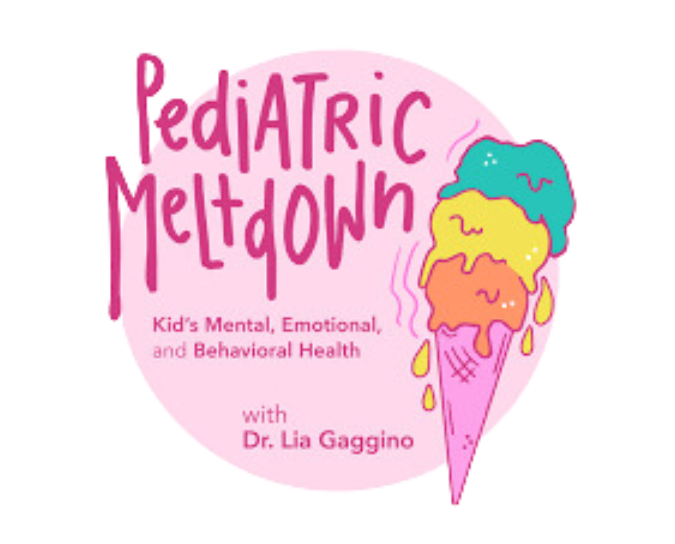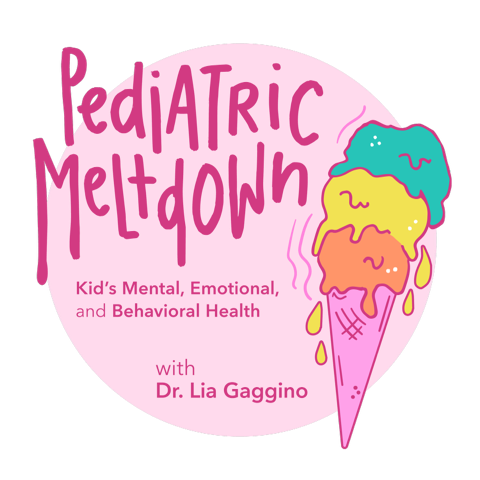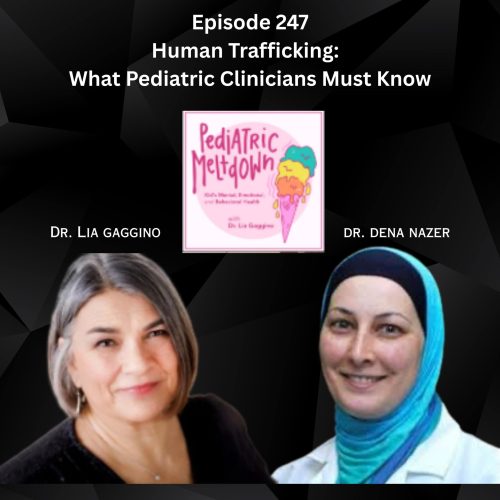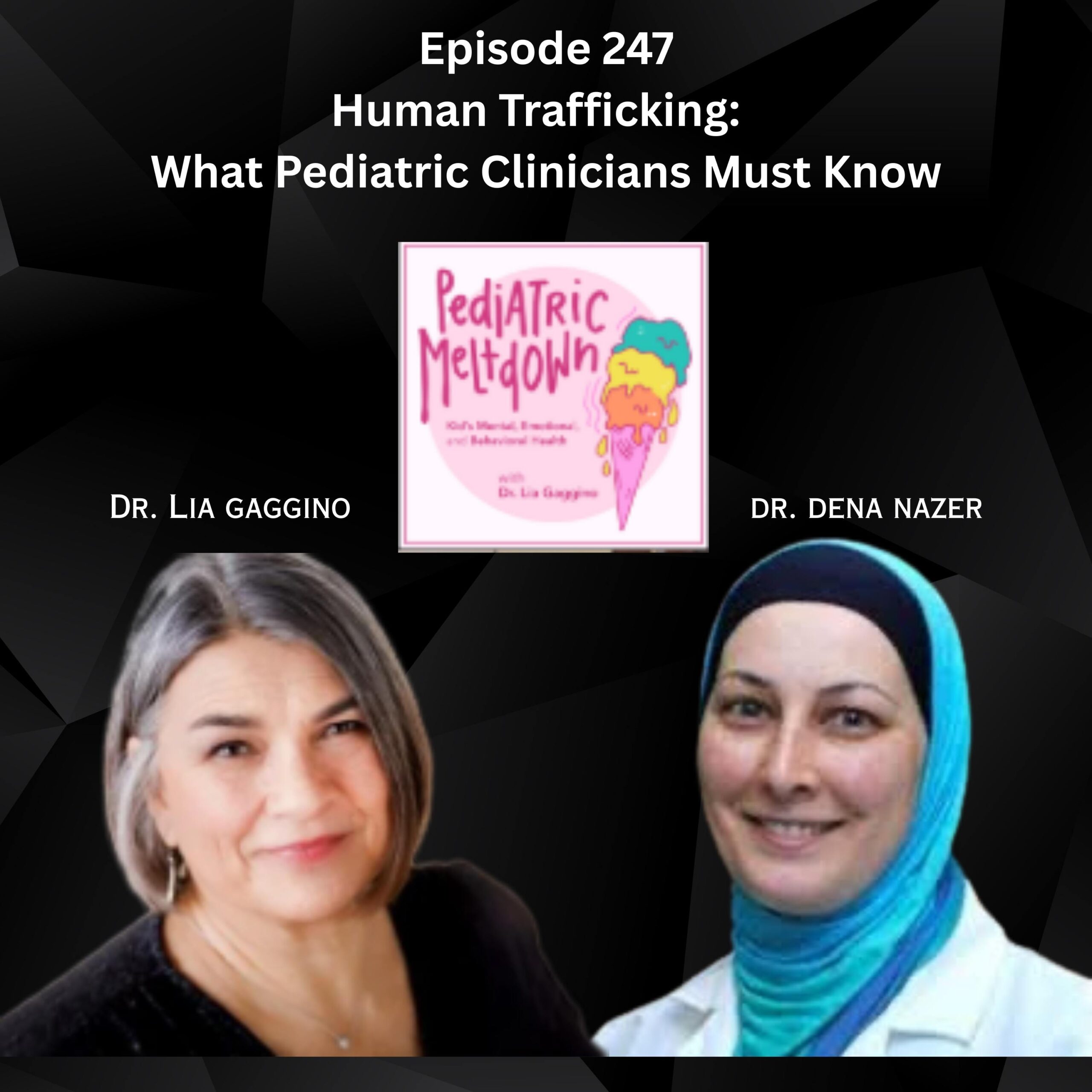This is the first of three episodes on aggression in youth and violence prevention.
Dr. Gaggino’s guest is Cindy Marble, who retired from the US Secret Service after 27 years, including two tours in the protective intelligence division. Cindy now trains individuals across various sectors on behavioral threat assessment and prevention, including K-12 schools, campuses, and private industry. In this podcast, she emphasizes the team approach to threat assessment, drawing on the insights of mental health providers, physicians, and local law enforcement. Cindy highlights that there is no single profile of a potential aggressor, and that prevention requires an understanding of the individual’s behavior and circumstances. She underscores the role of physicians and mental health providers in identifying potential threats, as well as considering factors such as home environment and law enforcement history. Cindy emphasizes that understanding the “why” behind a person’s behavior is critical to preventing violent acts
- Many thanks to the AAP and the MIAAP for making these 3 episodes possible by funding guest honorariums and podcast editing costs. In full disclosure, I have not received any funding from either entity for this series.
First, some facts:
- According to the Washington Post, there have been 376 school shootings since Columbine (1999)
- 348,000 students have experienced gun violence since Columbine shooting
[00:33 -12:57] Understanding the Pathway to Violence: A Multidisciplinary Approach
- Threat assessment is a community process that requires a multidisciplinary team.
- There is no specific profile of someone who carries out violent attacks.
- It’s essential to focus on a person’s behavior rather than their traits.
- Taking a multidisciplinary approach can help identify a pathway to violence and prevent violent incidents.
- Threat assessment is a community process involving partnerships with healthcare providers, mental health professionals, and local law enforcement.
[12:58 -28:22 Key Indicators and Intervention Strategies
- Warning signs may include a change in behavior, loss of interest or connections, and inappropriate interest in past mass violence attacks.
- Capability, access to weapons, and mental and physical ability are all considered in the threat assessment process.
- Assessing a person’s capability to carry out an act of violence, along with their mental and emotional state, is crucial in determining the level of risk.
- Interventions should focus on connecting the individual to support systems and responsible adults to prevent isolation and marginalization.
- Punishment or disciplinary action may not be the most effective solution and may exacerbate behavioral issues. Instead, focusing on intervention and support can lead to positive outcomes.
[28:23 – 40:40] The Importance of a Collective Approach in Threat Assessment
- Physicians cannot be expected to single-handedly assess and manage a threat
- Building relationships with schools and law enforcement can lead to a more effective community-based threat assessment process
- Understanding HIPAA and FERPA laws can provide comfort in sharing information for the safety of an individual
- Threat assessment is a collective effort that shares liability and considers different perspectives to create a management plan
- Best practice in threat assessment involves a systematic process of gathering information, documenting decisions, and creating a management plan together as a team
[40:41 – 49:20] Creating Safe Communities: The Importance of Threat Assessment Training
- Belonging to a community can give a sense of purpose and bigger belonging, which can prevent joining unhealthy radical groups
- It is important for individuals in schools, hospitals, and other sectors to receive threat assessment training to recognize warning signs and intervene in potential threats.
- Creating threat assessment teams and forming a community circle of safety can help prevent targeted violence.
- It is important for individuals in schools, hospitals, and other sectors to receive threat assessment training to recognize warning signs and intervene in potential threats.
- Creating threat assessment teams and forming a community circle of safety can help prevent targeted violence.
[49:21 – 56:19] Closing segment Takeaway
You can reach Cindy Marble
Website: https://www.ontic.co
Twitter:https://twitter.com/ontic_co
Linkedin:Ontic: Overview | LinkedIn
Links to resources mentioned on the show
HIPAA and FERPA privacy waiver statements:
The Final Report and Findings of the Safe School Initiative
Threat Assessment in Schools: A Guide to Managing Threatening Situations and to Creating Safe School Climates (2004)
Guide for Developing High-Quality School Emergency Plans (2013)
Available at: https://rems.ed.gov/docs/School_Guide_508C.pdf
Making Prevention a Reality: Identifying, Assessing & Managing the Threat of Targeted Attacks (2017)
Available at: www.fbi.gov/file-repository/making-prevention-a-reality.pdf
Protecting America’s Schools. A U.S. Secret Service Analysis of Targeted School
Violence (2019).
Available at: https://www.secretservice.gov/sites/default/files/2020-04/Protecting_Americas_Schools.pdf
Averting Targeted School Violence: A U.S. Secret Service Analysis of Plots Against Schools (2021).
Available at: https://www.secretservice.gov/sites/default/files/reports/2021-03/USSS%20Averting%20Targeted%20School%2
Other episodes you may like:
Ep #42 Deciphering Psychological Assessment Reports: What Your Need to Know
Ep #32 DisruptiveBehaviors: Insights and Strategies from a Child Psychiatrist
Key quotes for Twitter:
“Threat assessment is the process of gathering information – “dots”. The PCP, schools, therapists, and law enforcement all have dots to add to the picture. The key is communication” … Dr. Lia Gaggino on creating assessment teams and forming a community circle.
“These are NOT random acts, but instead result from intensive planning – research, preparation, acquiring means and finally implementation, the act. The acts are targeted to a person, place or institution and are laden with meaning to the perpetrator”. Dr. Lia Gaggino on acts of violence in schools and workplace
THANK YOU FOR YOUR SUPPORT!
Pediatric Meltdown was listed as a Top 20 Pediatric Podcast on FeedSpot.
If you’d like to connect with me, you can Tap the “What Are Your Thoughts” button at the top of the notes or you can find me on LinkedIn, Facebook, Instagram, and Twitter, or email me at gagginol@medicalbhs.com or gagginol@yahoo.com. To learn more about me visit https://www.medicalbhs.com/
LOVE WHAT YOU HEARD? Leave us a 5-star review so we can continue to provide you with great content. Share this episode and help people know more about children’s health and well-being.








